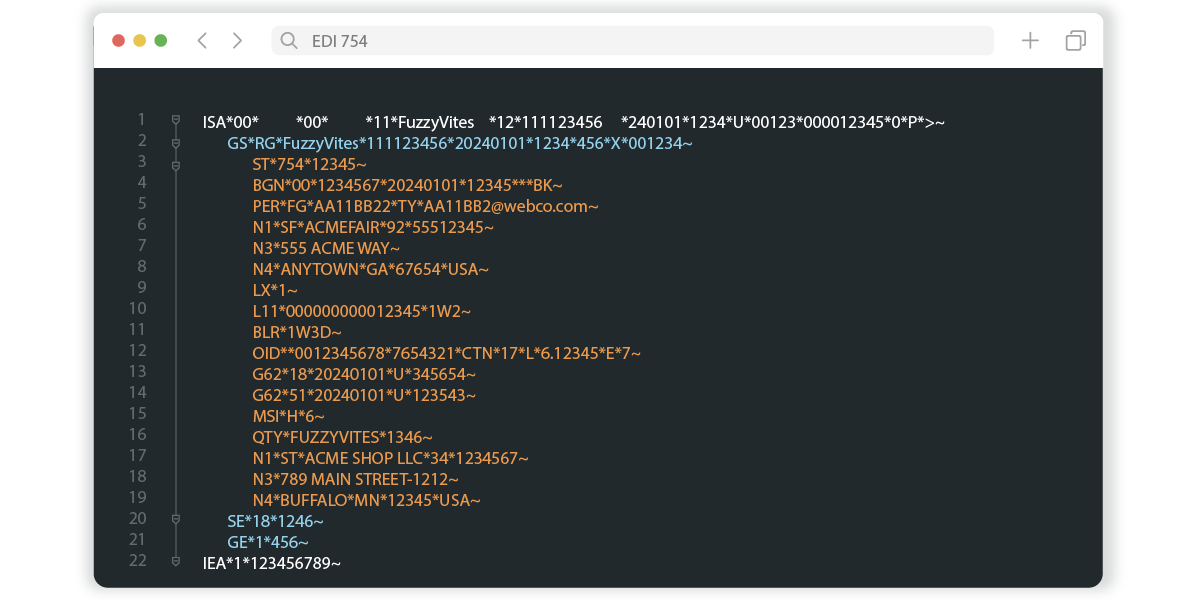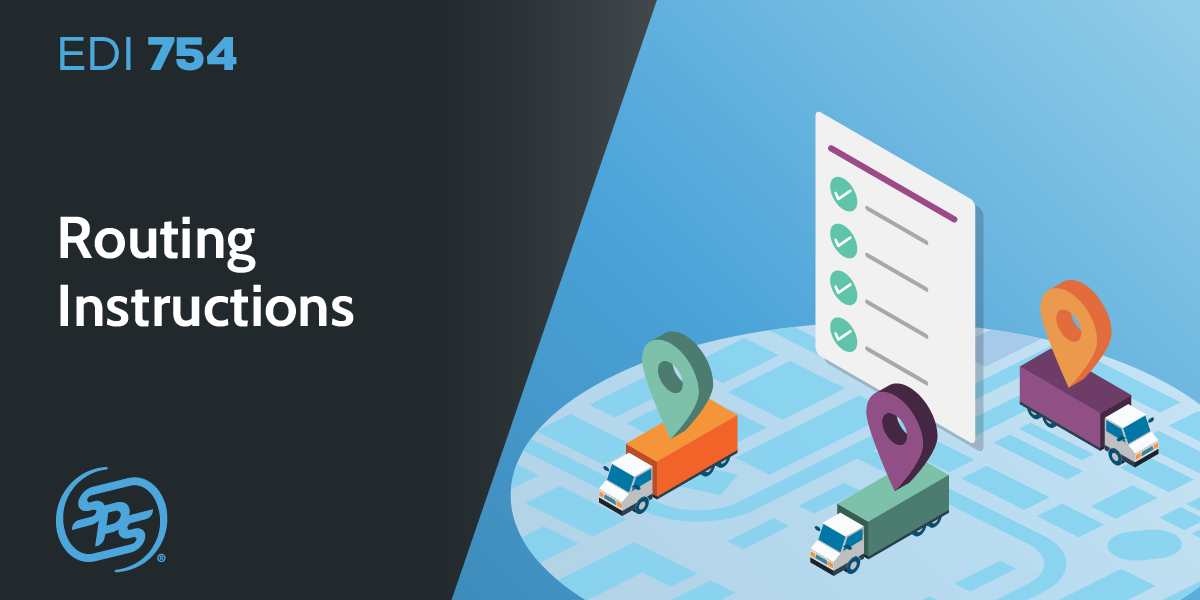The EDI 754 format
The EDI 754 enables efficient shipment coordination, ensuring the shipping process aligns with the buyer’s preferences and requirements.

The typical structure of an EDI 754 transaction set is:
BGN: Beginning segment
PER: Contact information
N1: Name
N4: Geographic location
TD5: Carrier details
L11: Reference identification
G62: Date/time
LX: Assigned number
AT7: Shipment status details
MS3: Interline information
How is the EDI 754 used?
Communication of routing instructions:
Shipment coordination:
Compliance with shipping policies:
Efficient handling of large shipments:
Popular retailers that use the EDI 754 include:
Benefits of using the EDI 754 Routing Instructions
Increased efficiency:
The EDI 754 streamlines the communication process between buyers and suppliers, reducing the time and effort required to convey routing instructions. This efficiency can lead to faster shipping times and more timely deliveries.
Improved accuracy:
Automating the transmission of routing instructions significantly reduces the likelihood of errors associated with manual data entry or miscommunication. This leads to fewer shipping errors, such as misrouted shipments.
Cost savings:
The EDI 754 promotes a more efficient routing process, including optimized transportation routes, cost-effective carriers and minimized delays and chargebacks.
Enhanced visibility:
The structured format of the EDI 754 allows for better tracking and more visibility. All parties involved can easily access and understand routing information, leading to improved coordination and planning.
Compliance and standardization:
The EDI 754 helps enforce compliance with the buyer’s shipping policies and promotes standardized communication of routing instructions.
Strengthened supplier-buyer relationships:
Clear communication of routing instructions can lead to improved relationships between buyers and suppliers. Suppliers are better equipped to meet buyers’ expectations, leading to higher satisfaction levels.
Common issues regarding EDI 754
Inaccurate or incomplete information:
The EDI 754 document may contain inaccurate or incomplete routing instructions due to data entry errors or miscommunication between parties. This can lead to shipments being incorrectly routed or delayed.
Non-compliance with routing instructions:
Suppliers may not comply with the routing instructions specified in the EDI 754 due to oversight or misunderstanding. This can result in increased shipping costs or contractual penalties.
Integration and compatibility issues:
Integrating the EDI 754 into existing systems can be challenging, especially if trading partners use different EDI standards or versions. Compatibility issues may hinder the seamless exchange of routing instructions.
Timeliness of information:
Delays in sending or receiving EDI 754 documents can result in outdated routing instructions.
Managing updates and changes:
Routing instructions may need to be updated or changed after the initial EDI 754 document has been sent. Managing these updates efficiently can be challenging.
Technical failures:
Technical issues, such as software bugs, network outages or hardware failures, can disrupt the EDI process, leading to delays or loss of data.
Automate EDI 754 Routing Instructions Message with SPS Commerce

Managing ongoing EDI tasks can be complex and time-consuming. Full-service EDI providers like SPS Commerce deliver EDI technology and associated staffing resources responsible for customizing, optimizing and operating your EDI solution.
SPS communicates directly with your trading partners to manage connectivity, setup, requirements, updates and support efforts. SPS also takes ownership of understanding your trading partner requirements and making map changes.
SPS Fulfillment proactively monitors and optimizes your solution to prevent errors and minimize data entry.
Interested in learning more about our EDI solution?
Additional EDI Resources
Enter a virtual library of information about EDI for suppliers, vendors and distributors to provide you with the product knowledge you need to power your business.
Ultimate List of EDI Transactions
Here are some of the most common documents and transactions that are supported through EDI automation.
Five Top EDI Documents to Automate
When you automate your most-used EDI documents, it can significantly cut down keystrokes and speed up processes.
EDI Glossary
Terminology including retail definitions, order management models, supply chain roles, software and distribution channels.
EDI for Suppliers & Vendors
Discover how leading vendor and supplier businesses are serving their customers better with EDI solutions from SPS Commerce.




